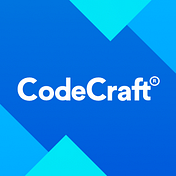CodeCraft

CodeCraft
A leading mobile app development company specialising on iPhone, Android, Cloud solutions, User Experience and UI Design.

A leading mobile app development company specialising on iPhone, Android, Cloud solutions, User Experience and UI Design.